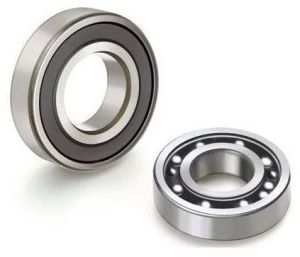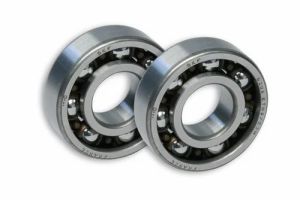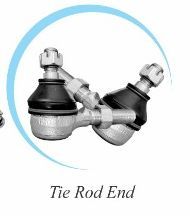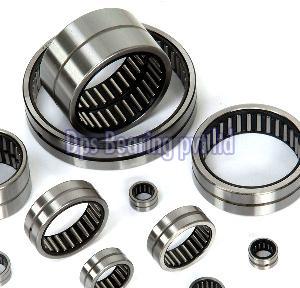
elastomeric bearings with Anchoring Bolt
10,000 - 12,000 Per pieces
The load capacity of elastomeric bridge bearings depends on various factors, and the design must be carefully engineered to ensure the bearings can adequately support the loads imposed by the bridge structure. Several key factors influence the load capacity of elastomeric bridge bearings: 1. **Bridge Design Load:** - The primary factor influencing the load capacity is the design load of the bridge, including dead loads (permanent loads like the weight of the bridge structure itself), live loads (variable loads such as traffic and pedestrians), and other dynamic forces. 2. **Bearing Size and Configuration:** - The dimensions and configuration of the elastomeric bearing, including its length, width, and thickness, play a significant role in determining its load-carrying capacity. Larger bearings generally have higher load capacities. 3. **Material Properties:** - The specific elastomeric material used in the bearing affects its load-bearing capacity. The material should have the appropriate compressive strength, elasticity, and durability to withstand the applied loads over time. 4. **Shore Hardness:** - The shore hardness of the elastomeric material, measured on the Shore durometer scale, is an indication of the material's resistance to indentation. The hardness should be selected based on the expected loads and deformation requirements. 5. **Number of Bearings:** - The arrangement and number of elastomeric bearings used in a bridge also impact the overall load distribution. Engineers consider the optimal layout to ensure that the loads are evenly distributed among the bearings. 6. **Temperature Effects:** - Temperature variations can affect the load capacity of elastomeric bearings. The material should be selected to withstand the expected temperature range, and the design should account for thermal expansion and contraction. 7. **Dynamic Forces:** - Consideration must be given to dynamic forces such as those caused by seismic events or bridge movement. Elastomeric bearings may need to accommodate not only static loads but also dynamic forces to ensure the bridge's stability during various conditions. 8. **Standards and Codes:** - Designing elastomeric bridge bearings in accordance with relevant industry standards and codes is essential. These standards provide guidelines for calculating and verifying the load capacity of the bearings. 9. **Testing and Quality Assurance:** - Load testing and quality assurance procedures are conducted to verify that the elastomeric bridge bearings meet the specified load capacity requirements. This may involve both laboratory testing and field testing. 10. **Installation Considerations:** - Proper installation of the elastomeric bearings, including correct torque for anchoring bolts, is crucial for ensuring their load-carrying capacity. Installation procedures should follow engineering specifications. It's important to note that elastomeric bridge bearings are typically designed by structural engineers using specific load calculations based on the characteristics of the bridge and its expected usage. The load capacity is determined through a combination of material properties, geometric considerations, and structural analysis. Consulting with a qualified structural engineer and adhering to industry standards and codes are essential to ensuring the proper selection and design of elastomeric bridge bearings for a specific application.

Ceiling Fan Bearings
40 Per Piece
100 Piece (MOQ)
Best Deals from Industrial Bearing

Industrial Bearings
Get Price Quote
5 Piece (MOQ)

Infrared Thermometer
Get Price Quote
We Offer Infrared Thermometer. Maintenance professionals monitor motor malfunctions, process lines, research heating & ventilation problems , measure temperature of connections inside an open electrical panel, monitor electrical motor performance safely & easily with the help of non contact type handheld Infrared Thermometers. Measurement with high optical resolution, laser sighting, wide temperature range, adjustable emissivity, speed, power data logging are some of the features desired. We have both handheld as well as Online solutions for almost all applications for non contact measurement of Temperature.

C R Bearing
Get Price Quote
100 Set (MOQ)

Teflon Wheel Mild Steel Bearing
14 Per Piece
3000 Piece (MOQ)

Tie Rod End
Get Price Quote
10 Piece (MOQ)

taper bearing
500 - 45,000 Per Piece
10 Piece (MOQ)
Combination loads are concentrated into a single rotational axis by tapered roller bearings. They enable radial and axial loads to act on the bearing assembly simultaneously. Because of its conical shape, tapered roller bearings reduce total stress on the interface elements and have an increased axial load-bearing capability as raceway contact angles increase. Propellers, axles, motor shafts, and a plethora of other applications all use tapered roller bearings.

Elliott Turbine Bearing Liner 4122232
40 Per Piece
100 Piece (MOQ)
Description: A new Split Type Liner Bearing Metal Shell upper Half a Replacement Spare Parts for Turbines. We are offering a Brand New Pair of Elliott Stem Turbine Bearing Top and Bottom Half Pc. These are made from high quality Babbitt Material We can also supply other Elliott Stem Turbine Bearings in Trimetal in case needed. This is a Liner Bearing, lower Half for a Primary Reformer Draft Fan for a Elliott Co. Steam or gas Turbine also sometimes referred as Turbo. Bearing Liner Top 412223-2

Thrust Ball Bearing
Get Price Quote

Forklift Channel Bearing
160 - 360 Per Piece
20 Set (MOQ)

Needle Roller Bearings
Get Price Quote
Purchasers can rely on us to make on time distribution of orders, as we have cooperated with established transportation facility providers. For ensuring safety of the products during handling, warehousing and transportation, we make use of quality packing material. Moreover, the task of packaging is undertaken by the experts.

PHS 12 Rod End Bearing
160 Per Piece
20 Piece (MOQ)

Electrostatic Precipitator Plain Bearings
500 - 1,500 Per Piece
Plain Bearing for Esp Rapping System. Made of Cast Iron of Grade Fg210 and Ht Bolts.

SKF Clutch Release Bearings
Get Price Quote
10 Piece (MOQ)

Ball Bearing
Get Price Quote
100 Piece (MOQ)
The Ultimate Choice for Seamless Handling of Radial and Axial Forces in Precision Applications. Precision Engineering: Our ball bearings are precision-engineered for accuracy, ensuring smooth rotation and reduced friction. High Load Capacity: These bearings can handle heavy radial and axial loads, making them versatile across various industries. Low Friction: Designed for efficiency, our bearings minimize friction, saving energy and extending their lifespan. Custom Solutions: We offer tailored solutions to match your specific requirements, from non-standard sizes to unique performance characteristics. Reliability and Durability: Our bearings are built for long-lasting performance, even in extreme temperature conditions, and prioritize noise reduction for quiet operation.

babbitt bearing
Get Price Quote
White metal babbitt bearings and rebabbitting of old bearings is undertaken by RA Power Solutions. We have latest design of centrifugal equipment which ensures the strong bonding between the Babbitt white metal and the steel lining of the bearing. We always follow quality check procedure after rebabbitting of bearings for excellent performance.

Pillow Block Bearings
100 Per Piece
1 Container (MOQ)

MSS BIM BI Metal Bearings
Get Price Quote
5200 Piece (MOQ)
The Bi-metal bearings offers a very high mechanical strength, fatigue and wear resistance. MSS-BIM bearings are particularly recommended for lubricated applications working under extreme loads, including shock loads and low speed oscillating movements. The bearing layer includes lead bronze, lead-free bronze and lead-free with solid lubricant for high performance.Characteristics : Recommended to use oil and grease condition. Good performance under Oscillating movement. Steel backing provides strength and rigidity and suitable for high load application. Great fatigue strength under dynamic and shock load application.

Thrust Ball Bearing
Get Price Quote